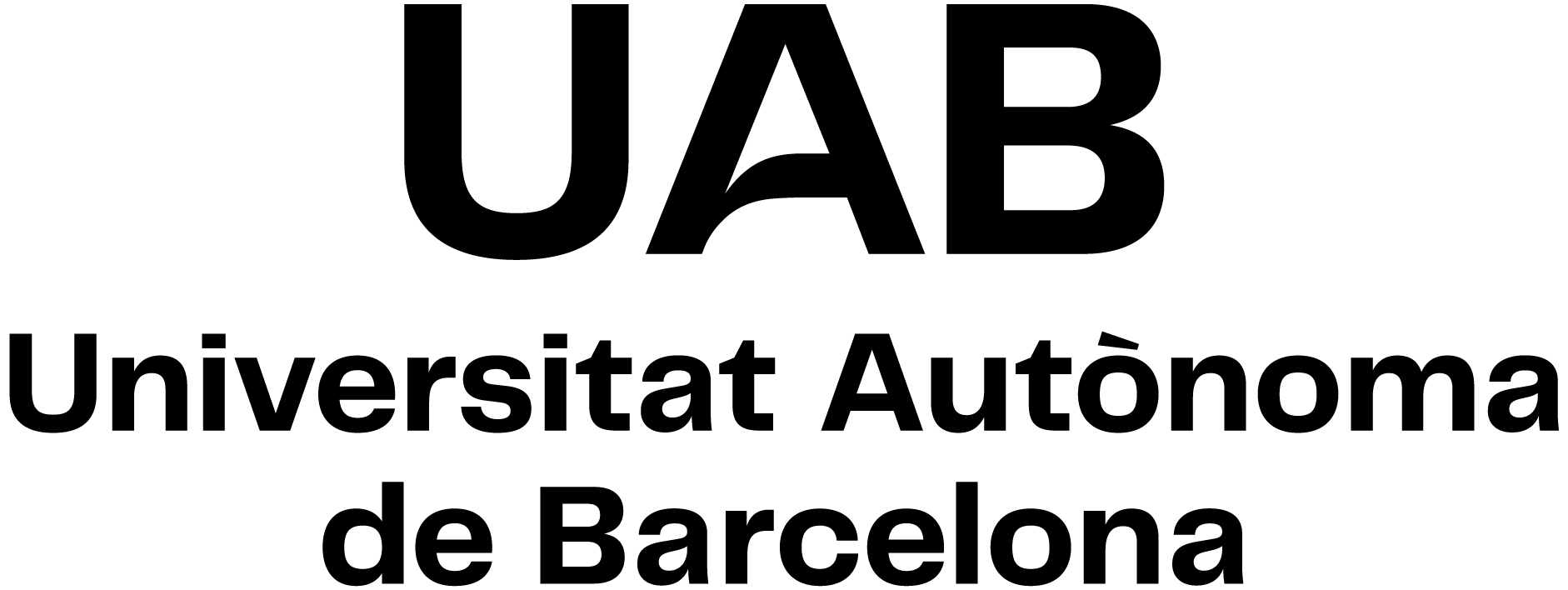
Probability and stochastic modelling
Code: 100104 ECTS Credits: 8| Degree | Type | Year | Semester |
|---|---|---|---|
| 2500149 Mathematics | OB | 3 | 1 |
Contact
- Name:
- Lluis Antoni Quer Sardanyons
- Email:
- lluis.quer@uab.cat
Teaching groups languages
You can check it through this link. To consult the language you will need to enter the CODE of the subject. Please note that this information is provisional until 30 November 2023.
Teachers
- Aureli Alabert Romero
- Giulia Binotto
Prerequisites
Calculus in several variaqbles and optimization. Mathematical Analysis
Objectives and Contextualisation
The applications of probability include practically all the sciences
and technology, being also the theoretical basis of Statistics. In
this course we will focus both on the theory (development of the
mathematical model of random phenomena) and on the most applied
aspects of modeling (find the right probability space) of real
problems and their resolution through the techniques learned.
Competences
- Apply critical spirit and thoroughness to validate or reject both one's own arguments and those of others.
- Formulate hypotheses and devise strategies to confirm or reject them.
- Identify the essential ideas of the demonstrations of certain basic theorems and know how to adapt them to obtain other results.
- Recognise the presence of Mathematics in other disciplines.
- Students must be capable of applying their knowledge to their work or vocation in a professional way and they should have building arguments and problem resolution skills within their area of study.
- Students must be capable of collecting and interpreting relevant data (usually within their area of study) in order to make statements that reflect social, scientific or ethical relevant issues.
- Students must be capable of communicating information, ideas, problems and solutions to both specialised and non-specialised audiences.
- Students must develop the necessary learning skills to undertake further training with a high degree of autonomy.
- Students must have and understand knowledge of an area of study built on the basis of general secondary education, and while it relies on some advanced textbooks it also includes some aspects coming from the forefront of its field of study.
- Take sex- or gender-based inequalities into consideration when operating within one's own area of knowledge.
- Work in teams.
Learning Outcomes
- Apply critical spirit and thoroughness to validate or reject both one's own arguments and those of others.
- Calculate probabilities in different spaces.
- Identify the main inequalities and discriminations in terms of sex/gender present in society.
- Recognise real situations in which the most common probabilistic distributions appear.
- Students must be capable of applying their knowledge to their work or vocation in a professional way and they should have building arguments and problem resolution skills within their area of study.
- Students must be capable of collecting and interpreting relevant data (usually within their area of study) in order to make statements that reflect social, scientific or ethical relevant issues.
- Students must be capable of communicating information, ideas, problems and solutions to both specialised and non-specialised audiences.
- Students must develop the necessary learning skills to undertake further training with a high degree of autonomy.
- Students must have and understand knowledge of an area of study built on the basis of general secondary education, and while it relies on some advanced textbooks it also includes some aspects coming from the forefront of its field of study.
- Use random variables and know how to use them to model real phenomena.
- Use the concept of independence and apply central limit theorem to simple cases.
- Work in teams
Content
1. Probabilistic models
2. Random variables and vectors
3. Mathematical expectation
4. Convergence of random variables
5. Laws of large numbers
6. Central limit theorem
Methodology
There will be three types of face-to-face activities: theory
classes, problem classes and practical classes. Attendance at the
practice sessions is mandatory.
This subject will use a Moodle Classroom in the UAB Virtual Campus:
http://cv.uab.cat. Students will be able to communicate with the
teachers through the email, always sent from the institutional
address @e-campus.uab.cat.
Annotation: Within the schedule set by the centre or degree programme, 15 minutes of one class will be reserved for students to evaluate their lecturers and their courses or modules through questionnaires.
Activities
| Title | Hours | ECTS | Learning Outcomes |
|---|---|---|---|
| Type: Directed | |||
| Classes of problems | 30 | 1.2 | 1, 2, 9, 8, 6, 4, 11, 10 |
| Classes of theory | 30 | 1.2 | 1, 2, 9, 8, 6, 4, 11, 10 |
| Type: Supervised | |||
| Sessions of practice | 6 | 0.24 | 1, 2, 9, 8, 6, 4, 11, 10 |
| Type: Autonomous | |||
| Personal study | 118 | 4.72 | 1, 2, 9, 8, 6, 4, 11, 10 |
Assessment
See the Catalan version.
Assessment Activities
| Title | Weighting | Hours | ECTS | Learning Outcomes |
|---|---|---|---|---|
| Continuous evaluation | 100% | 12 | 0.48 | 1, 2, 3, 9, 8, 7, 5, 6, 4, 12, 11, 10 |
| Exam of recuperation | 90% | 4 | 0.16 | 1, 2, 3, 9, 8, 7, 5, 6, 4, 12, 11, 10 |
Bibliography
Bibliografy
Xavier Bardina. Càlcul de Probabilitats. Servei de Publicacions UAB,
2004.
Marta Sanz-Solé . Probabilitats. Edicions Universitat de Barcelona,
1999.
Aureli Alabert. Mesura i Probabilitat (2a ed.). Servei de
Publicaciones UAB, 1997. (Disponible a
http://gent.uab.cat/aureli_alabert/content/teaching)
Olga Julià, David Márquez, Carles Rovira i Mònica Sarrà.
Probabilitats: Problemes i més problemes. Publicacions i edicions
Universitat de Barcelona, 2005.
Software
We will use the statistical software R.